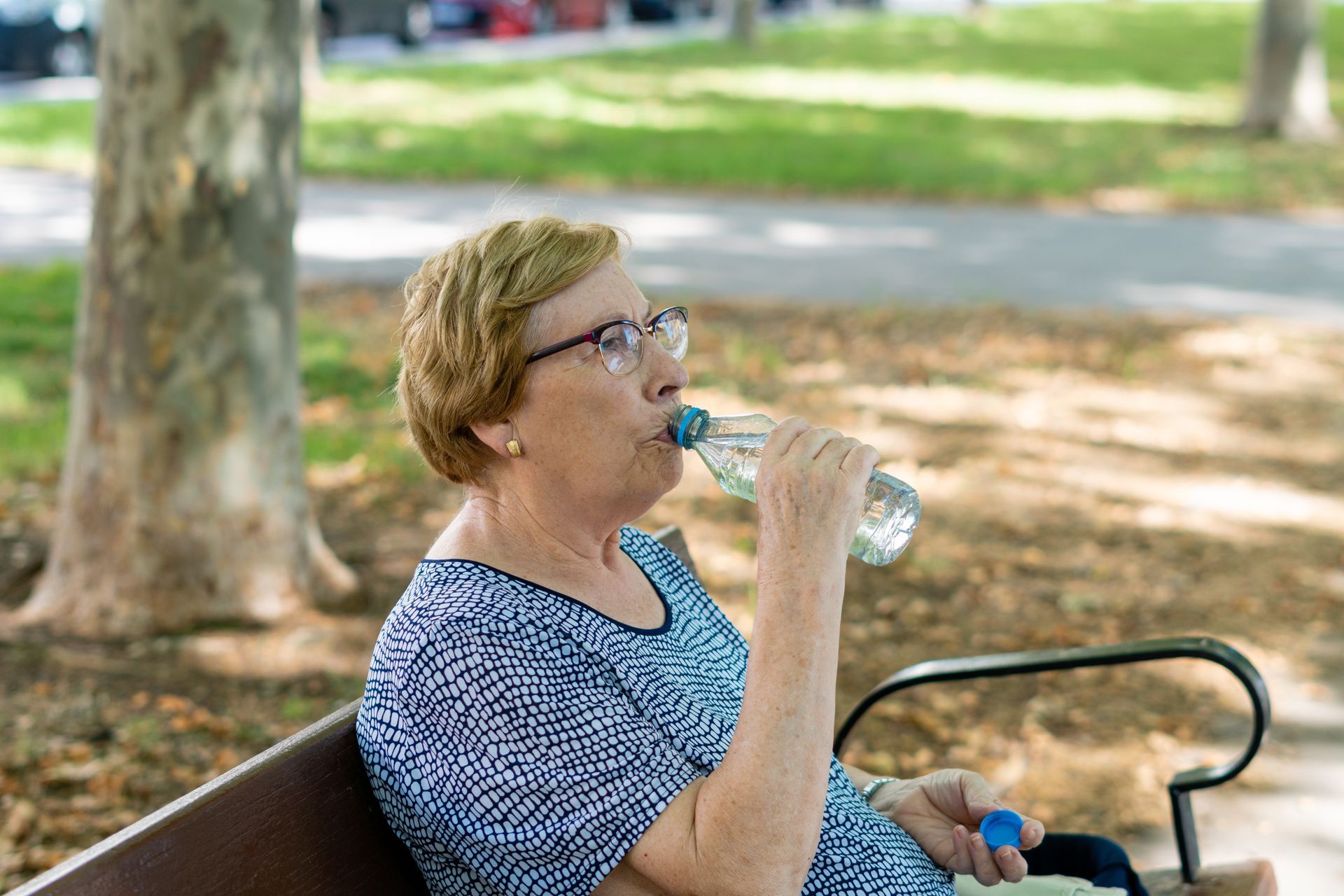BLOG
The Sandwich Generation Guide to Balancing Caregiving and Self-Care
The "sandwich generation" refers to adults who simultaneously care for their aging parents and their own children. This dual responsibility often leads to significant stress, financial strain, and time constraints. Balancing these demands while maintaining personal well-being is a complex challenge that requires strategic planning and support.
Understanding the sandwich generation’s unique pressures is crucial for developing effective coping strategies. Many individuals in this group are in their 40s and 50s, a period when they might also be managing career advancements and personal health issues. The convergence of these responsibilities can lead to burnout if not appropriately addressed. Therefore, it is essential to explore practical solutions to enable caregivers to fulfill their roles without compromising their health and happiness.
Recognizing the Challenges of the Sandwich Generation
Members of the sandwich generation often face emotional, physical, and financial challenges. Emotionally, they may experience guilt and anxiety from trying to meet everyone's needs. Physically, the demands of caregiving can lead to exhaustion and health issues. Financially, supporting both children and aging parents can strain resources, especially with rising healthcare and education costs.
The role reversal of caring for one's parents can be emotionally taxing. Witnessing a parent's decline while managing children's needs can lead to feelings of helplessness. This emotional burden is compounded by societal expectations to excel in caregiving and professional roles. Without adequate support, these pressures can lead to chronic stress and burnout.
Time management becomes critical; balancing work, family, and caregiving duties leaves little room for personal time. Caregivers often sacrifice their hobbies and social interactions, leading to isolation. This lack of personal time can negatively impact mental health, further diminishing the caregiver's ability to provide practical support. Recognizing these challenges is the first step toward finding viable solutions.
Financial strain is another significant concern. The costs associated with elder care, medical expenses, and children's education can deplete savings. A 2022 study highlighted that caregivers often spend substantial personal funds and lose income due to caregiving responsibilities. This financial pressure can lead to difficult decisions and added stress.
Implementing Effective Time Management Strategies for the Sandwich Generation
Effective time management is crucial for sandwich-generation caregivers to balance their numerous responsibilities. Prioritizing tasks helps ensure that essential duties are addressed promptly. Creating a daily or weekly schedule can provide structure and clarity.
Another vital strategy is delegating tasks. Caregivers should identify responsibilities that can be shared with other family members or outsourced. This delegation reduces the caregiver's burden and fosters a sense of shared responsibility within the family. Community resources, such as support groups or professional caregiving services, can also alleviate time constraints.

Setting realistic goals is essential to prevent overcommitment. Caregivers should assess their capacity and set achievable objectives for themselves and those they support. This helps maintain balance and reduces the risk of burnout. Regularly reassessing and adjusting these goals ensures they remain attainable as circumstances change.
Incorporating technology can streamline daily tasks. Utilizing digital calendars, reminder apps, and online communication tools can enhance organization. These tools assist in coordinating schedules, managing appointments, and staying connected with family members. Embracing technology can save time and reduce the stress associated with manual planning.
Prioritizing Self-Care for the Sandwich Generation
Self-care is essential for caregivers to maintain their health and continue providing quality support. Neglecting personal well-being can lead to physical and emotional exhaustion. A recent report emphasized the importance of finding meaning outside of caregiving to avoid burnout. Regular physical activity, such as walking or yoga, can improve mood and energy levels.
Mental health for the sandwich generation should be a priority, with caregivers taking time for relaxation and stress-reducing activities. Practices like meditation, deep breathing exercises, or pursuing hobbies can provide mental rejuvenation. Maintaining social connections is also vital; spending time with friends or participating in community groups offers emotional support. These interactions can alleviate feelings of isolation and provide a sense of belonging.
Adequate rest is crucial for physical and mental health. Caregivers should establish a regular sleep routine to ensure sufficient rest. Quality sleep enhances cognitive function and resilience, enabling caregivers to handle daily challenges more effectively. If sleep disturbances occur, it is recommended that they seek medical advice to address potential underlying issues.
Nutrition plays a significant role in overall well-being. Consuming a balanced diet rich in fruits, vegetables, and lean proteins supports energy levels and health. Caregivers should plan and prepare meals to avoid relying on unhealthy convenience foods. Staying hydrated is equally important, as dehydration can contribute to fatigue and stress. Maintaining proper nutrition helps caregivers sustain their energy and remain physically resilient.
Navigating Financial Challenges for the Sandwich Generation
The financial strain of being in the sandwich generation can be overwhelming. Supporting both children and aging parents often results in increased expenses. Rising healthcare costs, tuition fees, and daily living expenses make financial planning essential. Without a structured approach, financial stress can quickly escalate.
Budgeting is a crucial tool for managing expenses. Caregivers should track monthly spending and identify areas for cost-cutting. Utilizing financial planning software can provide a clear picture of income versus expenditures.

Exploring financial assistance programs can ease the burden. Government programs, non-profits, and employer benefits may offer caregiving support. Some insurance policies cover in-home care, reducing out-of-pocket expenses. Understanding available resources can help caregivers make better financial choices.
Long-term financial planning is key to stability. Consulting a financial planner can provide insight into managing savings, investments, and retirement funds. Estate planning ensures assets are allocated appropriately, reducing future financial stress. Creating a financial safety net allows caregivers to handle unexpected costs more easily.
Evaluating Assisted Living as a Long-Term Solution
If the strain on the sandwich generation becomes too great, families may need to consider assisted living options. Balancing caregiving responsibilities while ensuring seniors receive quality care can be challenging. Assisted living communities provide a structured environment with professional support. This option allows seniors to maintain independence while receiving necessary assistance.
Assisted living offers numerous benefits for seniors and their families. Residents gain access to healthcare, social activities, and daily living support. These communities provide a safe environment tailored to seniors’ needs. Families gain peace of mind knowing their loved ones receive professional care.
The transition to assisted living requires careful planning. Families should research communities that align with their loved one’s needs and preferences. Touring facilities, meeting staff, and reviewing care plans can help make an informed decision. Open discussions with seniors ensure their comfort and involvement in the process.
Families should seek a facility that prioritizes personalized care. A community that tailors services to each resident’s needs ensures a higher quality of life. A well-trained staff, engaging programs, and a nurturing environment contribute to a positive experience. Finding the right assisted living option can greatly improve the well-being of seniors and their caregivers.
Finding the Right Support for Your Loved One
Navigating the challenges of the sandwich generation requires careful planning and support. Balancing caregiving with self-care is essential to maintaining long-term well-being. Caregivers can alleviate stress by utilizing time management strategies, financial planning, and professional resources.
Assisted living communities offer a compassionate solution for seniors who need additional support. These environments provide professional care while fostering independence and social engagement. Choosing the right assisted living community can ensure that both seniors and caregivers experience a higher quality of life.
At Assured Senior Living, we understand the unique challenges of the sandwich generation. Our communities provide personalized care, enriching activities, and a supportive environment for seniors. Contact us today to learn how we can help your family find the right balance between caregiving and self-care.















